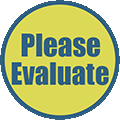Neurodevelopmental Disorders; Mood and Anxiety Disorders
 Lack of expected development in one or more domains (motor, language and cognition, social or self-care) signals the likelihood of a developmental disorder. When behavior problems persist and significantly interfere with quality of individual or family life, they may signal the presence of a "disorder," especially a neurodevelopmental disorder or a mood disorder. It is not appropriate to refer to these as "behavior problems"; the "problems" are merely symptoms of something larger.
Lack of expected development in one or more domains (motor, language and cognition, social or self-care) signals the likelihood of a developmental disorder. When behavior problems persist and significantly interfere with quality of individual or family life, they may signal the presence of a "disorder," especially a neurodevelopmental disorder or a mood disorder. It is not appropriate to refer to these as "behavior problems"; the "problems" are merely symptoms of something larger.
Common Neurodevelopmental Disorders; Mood and Anxiety Disorders
Pediatricians are often the first to assess and identify neurodevelopmental and pediatric mood and anxiety disorders; and pediatricians are becoming increasingly involved in treatment or management of these disorders because psychiatric and psychological services are often less available and sometimes less likely to be covered by healthcare plans.
Below is a list of the most common diagnoses seen in children and adolescents, using categories from the Diagnostic and Statistical Manual of Mental Disorders (DSM)
| Category | Major examples |
|---|---|
| Attention Deficit Disorders | • ADHD combined Type • ADHD Inattentive Type- or ADD |
| Developmental Movement Disorders | • Cerebral palsy • Developmental Dyspraxia • Developmental Oral Apraxia |
| Language and Learning Disorders | • Expressive or Receptive Language Disorders • Articulation Disorders • Stuttering • Dyslexia (reading) • Dyscalculia (math) • Dysgraphia (writing) • Nonverbal Learning Disorder |
| Intellectual Disability | also called Global Developmental Disorder in very young children; and previously termed Mental Retardation; often associated with a genetic disorder. |
| Mood & Anxiety Disorders | • Mood: Dysthymia; Major Depression; Bipolar Disorder. • Anxiety: Phobias, Selective Mutism, Generalized Anxiety. • Obsessive-Compulsive Disorder |
| Autism Spectrum Disorder |




